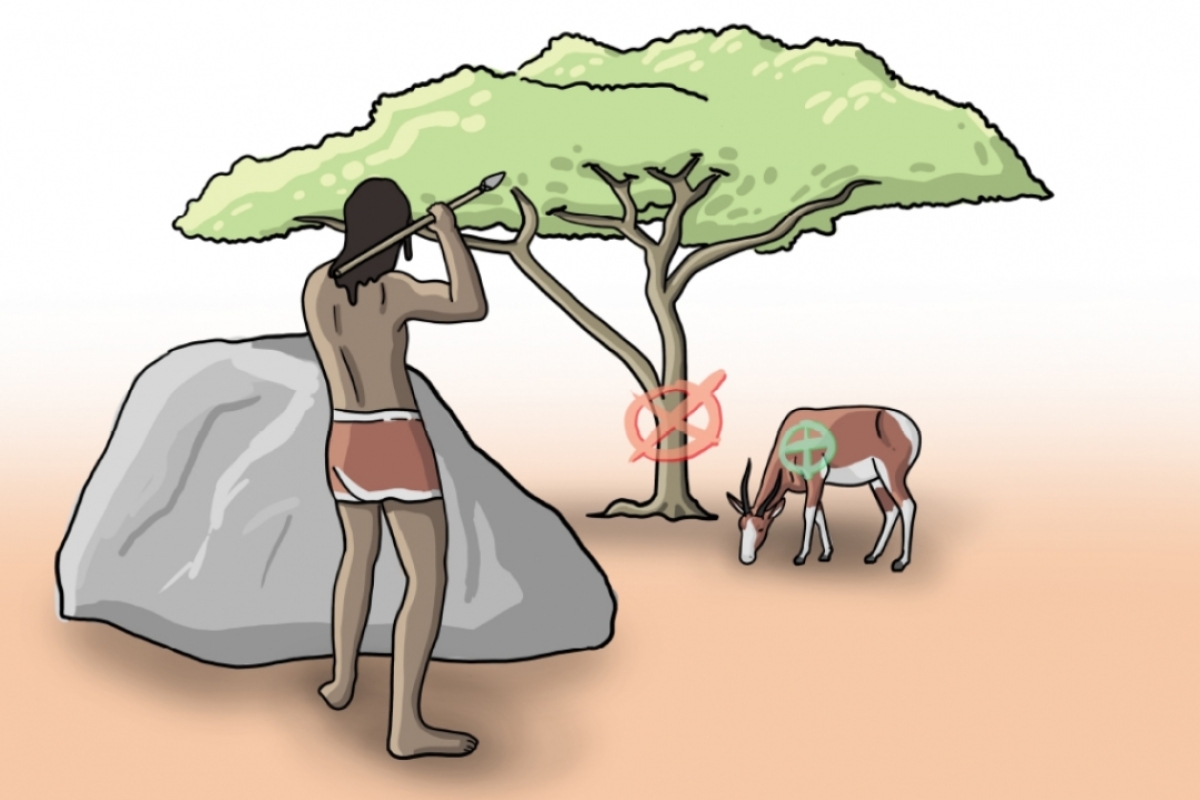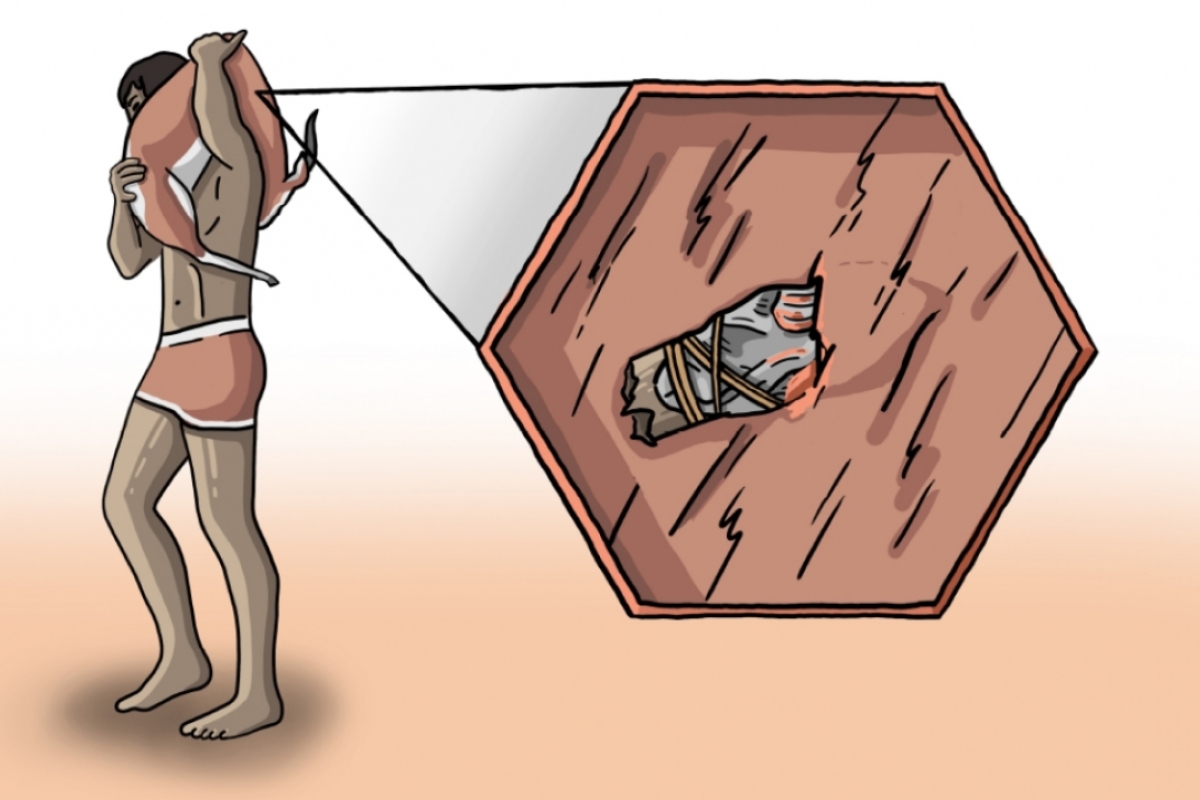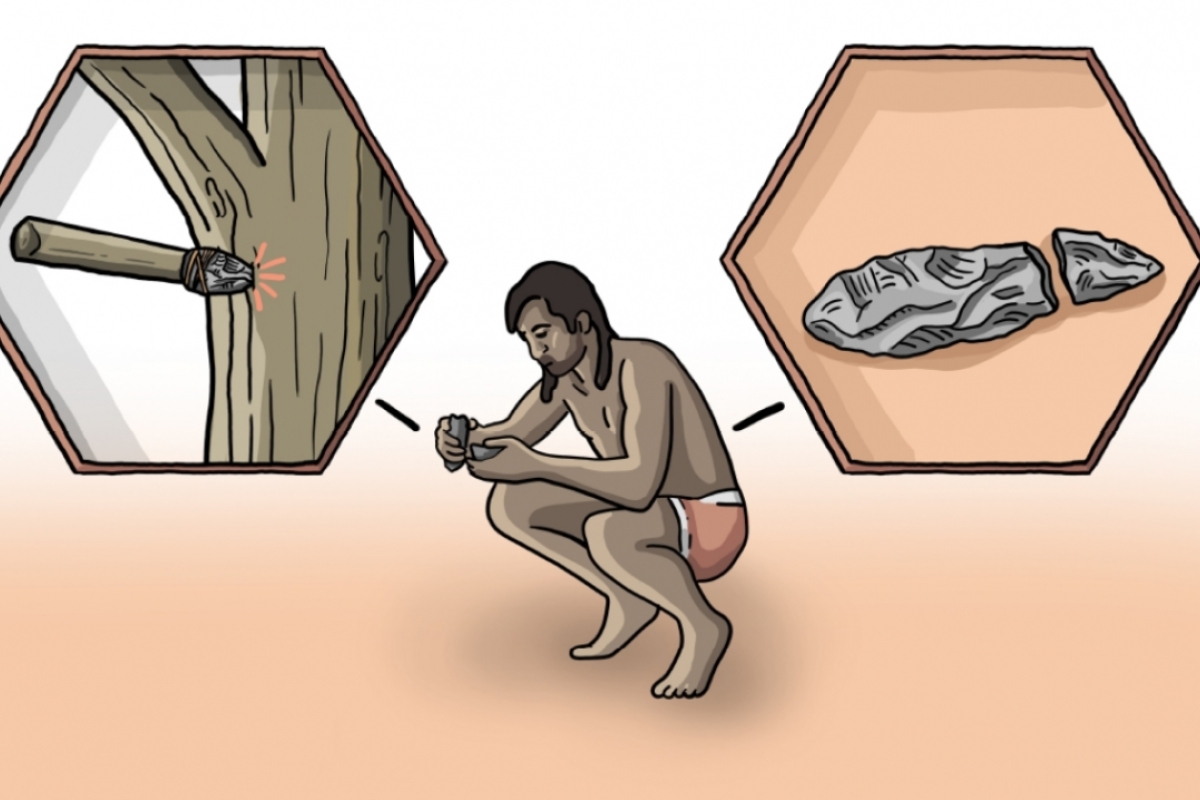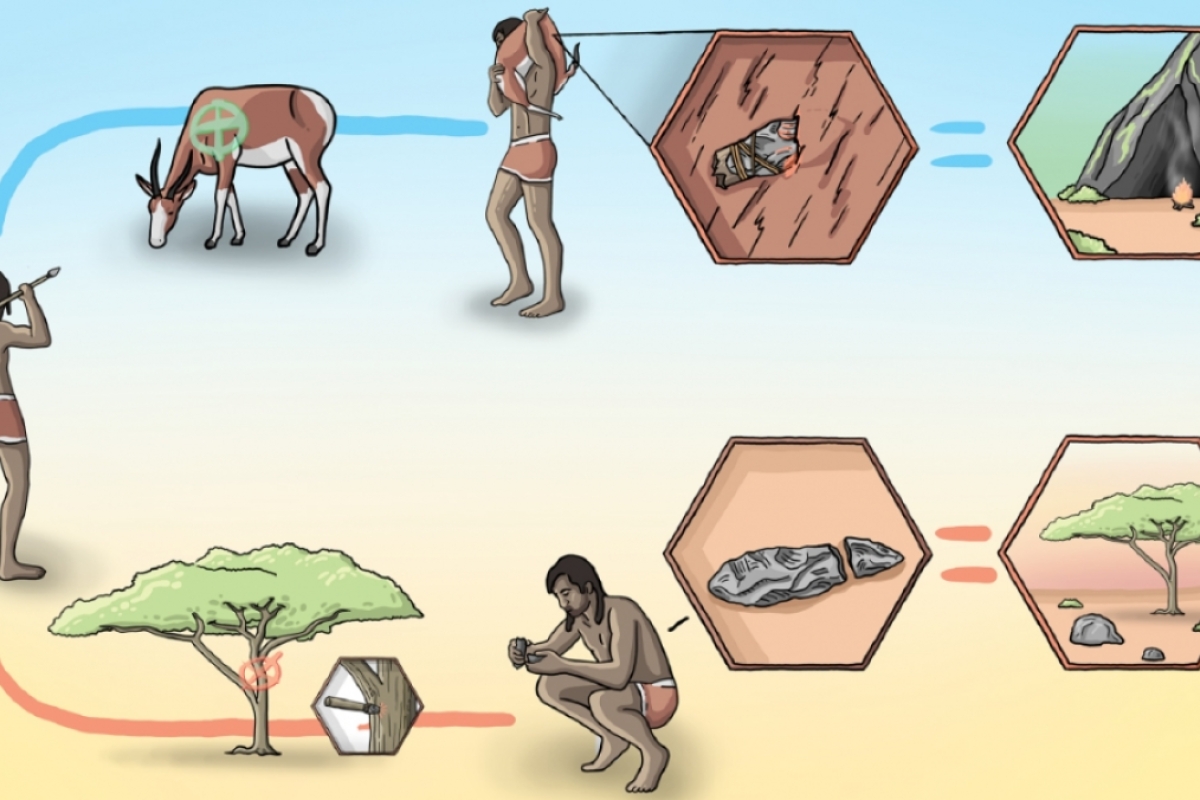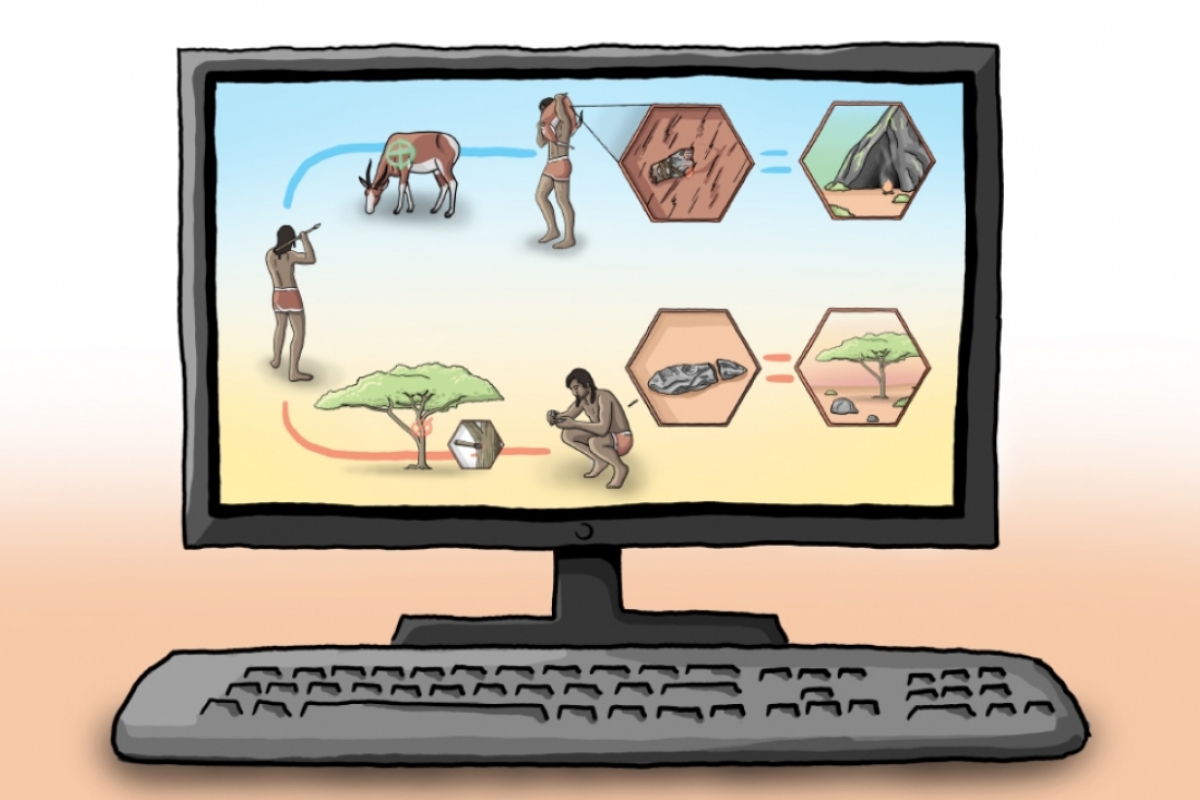New research suggests projectile weapons were used regularly during the Middle Stone Age

Left: Four points on flakes from Pinnacle Point, South Africa. Right: three bifacial lanceolate Aterian points from El Beyed, North Africa. Image courtesy of Curtis Marean
Modern humans are the world’s apex predator. For tens of thousands of years, deep into the Stone Age, humans hunted and killed the largest animals on land and sea. How? By combining a sharp stone flake, called a point, with a shaft, humans developed complex hunting weapons. Archaeologists eagerly search for these points in their excavations to better understand when humans became the world’s dominant predator and how those projectiles evolved over time.
Frustratingly, these points are rare in the caves and rock-shelters where archaeologists have focused their digs. This rarity has led some to suggest that projectile weapons were not often used during time periods when we only have a few specimens in archaeological sites from around 500,000 to 40,000 years ago. New research led by Arizona State University researchers Claudine Gravel-Miguel and John K. Murray published in the Journal of Human Evolution uses an agent-based model and indicates that this conclusion may be too simplistic. The model demonstrates that most projectile weapons, as by the nature of their use, were likely lost across the landscape and only a few were discarded at the habitation camps that are most commonly excavated.
The research idea began when coauthor Curtis W. Marean questioned why the number of projectile points is often low in archaeological sites. Marean is associate director of the Institute of Human Origins and Foundation Professor in the School of Human Evolution and Social Change.
“The archaeological record is not made of behavior, but rather discarded materials,” said Marean. “The number of stone points that could have been used as projectiles fluctuates at archaeological sites, making it difficult to define when this technology was first widely adopted.”
To explore this question, the team modified a computer model already used to study the foraging potential of the south cape coast of South Africa.
“The model already had foragers collecting plants, shellfish and hunting mammals on a landscape simulating the cape environment of the past,” said Gravel-Miguel, a postdoctoral researcher with the Institute of Human Origins. “To this model, we added projectile weapons — we gave each hunter a set of weapons for hunting and added code to record where the used projectiles were discarded on the landscape.”
The results of the model show that, on average, only about 5% to 10% of the used projectiles get discarded at habitation camps, such as caves, that would likely be excavated. The remaining 90% to 95% of used projectiles are typically lost or discarded at hunting sites that have a low archaeological visibility and, therefore, are unlikely to be documented.
“Agent-based models are increasingly popular tools to explore multiple questions about the past, including how complex behavior is reflected in the archaeological record,” Marean said.
In this case, the model focuses on hunters who use projectile weapons and discard them in different locations based on what happens during the hunt. A projectile that breaks because it came in contact with a tree or rock is discarded on the spot, but a projectile embedded in the flesh of the animal can be brought back to be discarded at the habitation camp. Foragers move their camps to optimize the resources they can collect easily, which affects where projectile weapons are discarded. Over months of simulated days, the discarded projectile weapons accumulate to create spatial assemblages that can be studied like an archaeological record — but without the sampling biases or preservation problems that are common in archaeology.
The team, which includes ASU doctoral graduate Benjamin Schoville, now at University of Queensland (Australia), and former Institute of Human Origins postdoctoral researcher Colin Wren, now at University of Colorado, Coloardo Springs, ran over 2,400 simulations using different population sizes, levels of tool reuse and rates of projectile hunting and compared the number of projectiles discarded at camps with those lost at hunting locations.
The model showed that the majority of projectile tools are consistently lost during hunting and that only a few tools are discarded at habitation camps, which are locations that would likely accumulate enough other artifacts to be archaeologically visible.
“Our conclusion is that even small numbers of projectile weapons in early archaeological sites may indicate that projectile weapons were used daily,” said Gravel-Miguel. “This has important ramifications for our understanding of the evolution of projectile weapons, as it suggests that its consistent adoption may have been earlier than previously thought based on the archaeological record.”
The earliest documented instance of a projectile weapon dates to around 500,000 years ago from the site of Kathu Pan in South Africa. While to date, it is the only instance of such technology we have for that time, the results of the model suggests that the rare Kathu Pan projectiles might indicate that projectile weapons were already used somewhat regularly at that time.
“As the use of projectile technology is associated with foresight, planning, improved hunting success and an expanded ecological niche, this suggests that, as early as a half million years ago, our ancestors may have evolved some important modern traits,” said Murray, a doctoral student in the School of Human Evolution and Social Change.
This research was published this week as “Exploring variability in lithic armature discard in the archaeological record,” Journal of Human Evolution, Claudine Gravel-Miguel, John K. Murray, Benjamin J. Schoville, Colin D. Wren, Curtis W. Marean.
More Science and technology
Largest genetic chimpanzee study unveils how they’ve adapted to multiple habitats and disease
Chimpanzees are humans' closest living relatives, sharing about 98% of our DNA. Because of this, scientists can learn more about…

Beyond the 'Dragon Arc': Unveiling a treasure trove of hidden stars
NASA's James Webb Space Telescope (JWST) has set a new milestone: capturing images of over 40 individual stars in a galaxy so…

ASU selected as home and partner for CHIPS and Science Act-funded national facility for semiconductor advanced packaging
Following a week where a spirited effort by the Sun Devil football team captured the nation’s attention in the Peach Bowl, it is…
